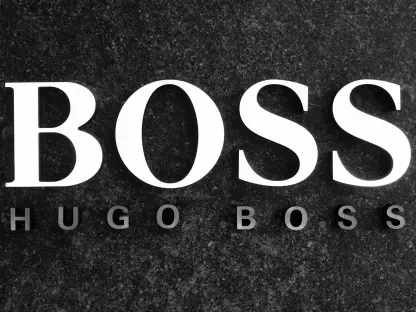As the medical technology sector navigates a transformative era, a recent comprehensive analysis by industry experts reveals a striking resurgence in mergers and acquisitions (M&A) activity within the MedTech space, setting the stage for significant growth. Following a period of cautious restraint in the aftermath of global disruptions, the industry has witnessed an impressive rebound in dealmaking over the past year, setting a robust foundation for continued momentum. This revival is underpinned by strong financial performance, favorable economic conditions, and an urgent need to address emerging challenges while seizing new opportunities. The focus has shifted toward strategic repositioning, with companies leveraging M&A to optimize portfolios and drive innovation. This article delves into the critical trends shaping the current landscape, explores key predictions for the near future, and examines how MedTech leaders are adapting to a dynamic environment to enhance patient outcomes and deliver value to stakeholders.
Financial Recovery and Growth Dynamics
The MedTech industry has demonstrated remarkable financial resilience, with significant indicators pointing to a sustained recovery. Notably, stocks within the sector, as tracked by the S&P 500 Health Care Equipment index, have surged by 18% from their lowest point in late 2023, outstripping the broader health care index’s more modest 9% rise. Inflation-adjusted revenue for US-based MedTech firms also reflects a positive trajectory, climbing by roughly 6% year-over-year in the latest data, a sharp turnaround from the 2% decline observed previously. Projections suggest a steady revenue increase of about 3% annually over the coming years, signaling sustained optimism among investors and executives alike. This financial upswing has fueled renewed confidence in strategic investments, setting the stage for an uptick in M&A activity as companies capitalize on accumulated cash reserves to pursue growth-oriented deals in a competitive market.
Beyond the numbers, this financial rebound has broader implications for how MedTech companies approach M&A. With profitability back in focus after a period of portfolio realignment through divestitures, there’s a noticeable shift toward proactive dealmaking. The emphasis is on leveraging strong earnings to fund acquisitions that align with long-term strategic goals, whether by expanding into high-growth therapeutic areas or integrating innovative technologies. While the muted M&A environment of recent years reflected a cautious stance, the current landscape suggests a pivot to boldness, driven by the need to stay ahead of market trends. This resurgence is not without challenges, as firms must navigate regulatory complexities and pricing pressures, but the overall momentum indicates a sector ready to embrace calculated risks for substantial rewards in patient care and shareholder value.
Strategic Imperatives Driving Dealmaking
A defining characteristic of the current MedTech M&A environment is the strategic imperative to adapt to multifaceted pressures and opportunities. Large, diversified conglomerates face ongoing margin constraints due to fierce competition, stringent pricing controls, and rising regulatory costs, prompting a wave of divestitures and spin-offs. These actions aim to streamline operations and enhance shareholder returns by shedding non-core assets and focusing on high-performing segments. Simultaneously, there’s a surge in buy-side activity targeting small and mid-cap firms, as well as pre-commercial innovators in promising fields like in vitro diagnostics, cardiovascular solutions, and orthopedics. This trend reflects broader economic optimism and the availability of substantial cash reserves, enabling larger players to bolster their portfolios with cutting-edge capabilities.
Another pivotal driver of M&A activity is the rapid integration of advanced technologies into MedTech offerings. The adoption of wearables, connected care platforms, and Generative AI solutions is accelerating, pushing companies to acquire firms that can enhance their innovation pipelines. Venture capital interest in these areas further amplifies dealmaking, as investors seek to back transformative health care tools. Additionally, the emergence of GLP-1 weight-loss drugs presents both a threat and an opportunity, as these therapies could reduce demand for certain devices in obesity-related conditions. In response, MedTech firms are employing both offensive and defensive M&A strategies to protect existing markets while exploring adjacent spaces. This dual approach underscores a nuanced balance between risk mitigation and ambitious expansion in a fast-evolving sector.
Evolving Role of Private Equity and Collaborative Deals
Private equity (PE) is poised to play a reinvigorated role in the MedTech M&A landscape, supported by significant uninvested capital, often referred to as “dry powder,” and attractive valuations in niche markets. Areas such as dental care, nephrology, urology, and diagnostics are drawing heightened PE interest, as these segments offer untapped growth potential and specialized focus. Unlike the broader corporate M&A strategies, PE firms often prioritize operational efficiencies and long-term value creation, which can complement the innovation-driven goals of MedTech companies. This convergence of interests is fostering an increase in collaborative “club deals,” where PE entities partner with corporate buyers to share risks and maximize returns on complex transactions.
The resurgence of PE activity also reflects a broader trend of diversification in deal structures within the MedTech space. These partnerships enable firms to tackle larger, more ambitious acquisitions that might otherwise be out of reach due to financial or strategic constraints. Moreover, the focus on niche therapeutic areas allows for targeted investments that can yield outsized impacts on patient outcomes, particularly in underserved markets. As PE firms and corporate players align their objectives, the resulting synergies are expected to drive innovation and efficiency, reshaping competitive dynamics. However, executing these deals requires careful navigation of regulatory landscapes and integration challenges, ensuring that the potential for value creation is fully realized in a sector where precision and impact are paramount.
Navigating Future Opportunities with Strategic Foresight
Reflecting on the insights gathered, the MedTech M&A landscape over the past year showcased a sector that adeptly balanced recovery with reinvention. Companies capitalized on financial upturns to pursue strategic acquisitions, while divestitures helped refine focus amid margin pressures. The integration of groundbreaking technologies and the response to disruptive trends like GLP-1 drugs highlighted an industry committed to adaptability. Private equity’s renewed engagement further enriched the ecosystem, fostering partnerships that amplified impact. Looking ahead, MedTech executives are encouraged to expand their strategic scope, aligning deals with emerging sector trends while meticulously addressing execution challenges. Prioritizing long-term value over short-term gains will be crucial, as will fostering collaborations that enhance innovation and patient care. By embracing a forward-thinking mindset, leaders can transform current tailwinds into lasting advancements, ensuring the industry continues to thrive in a complex, competitive environment.









